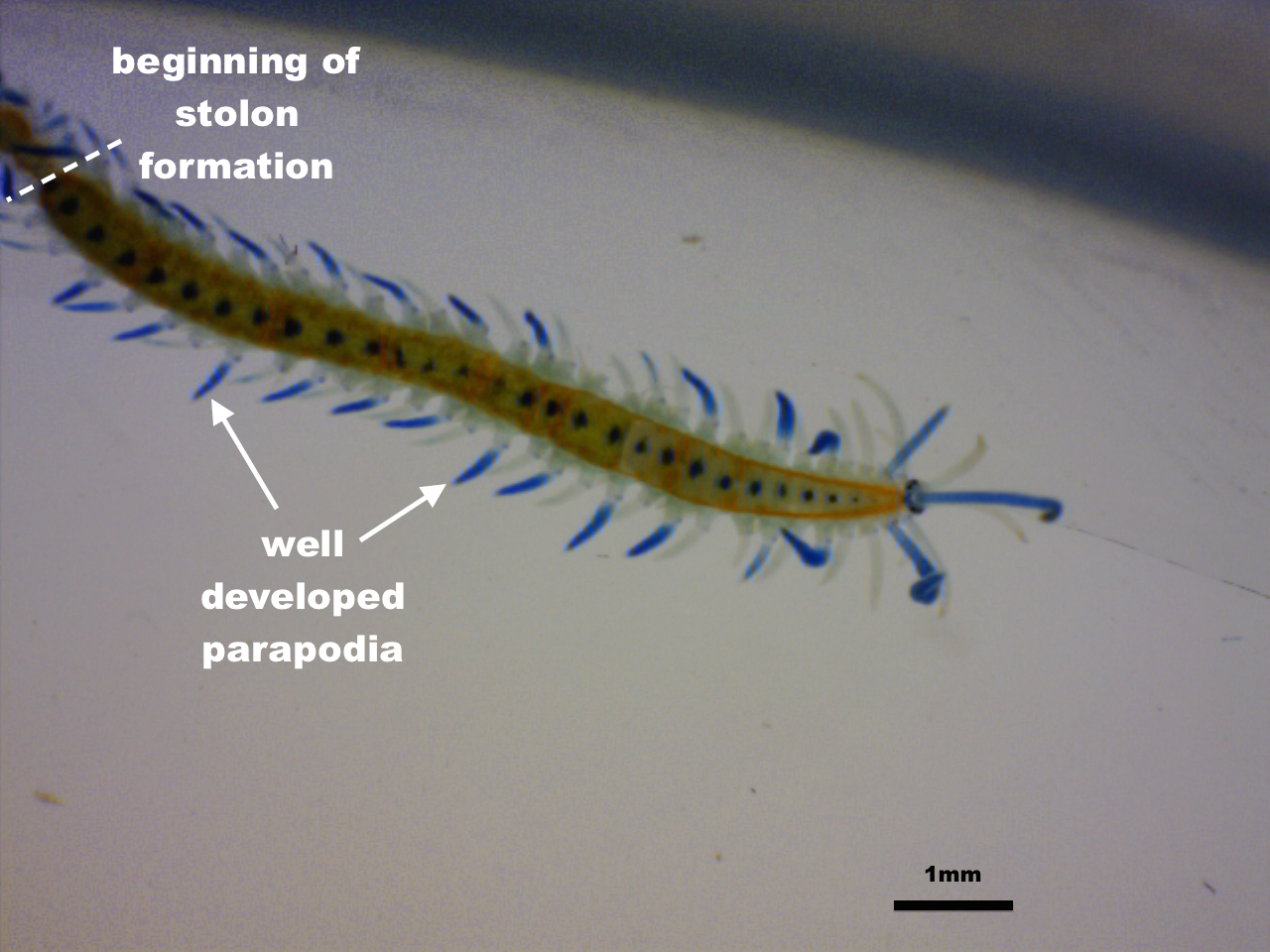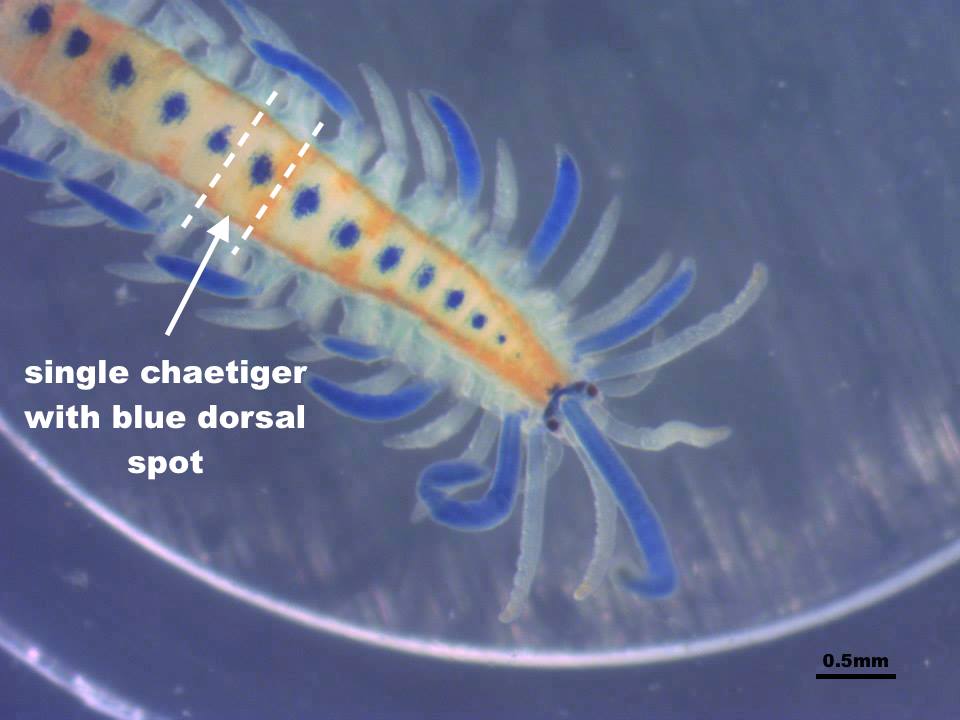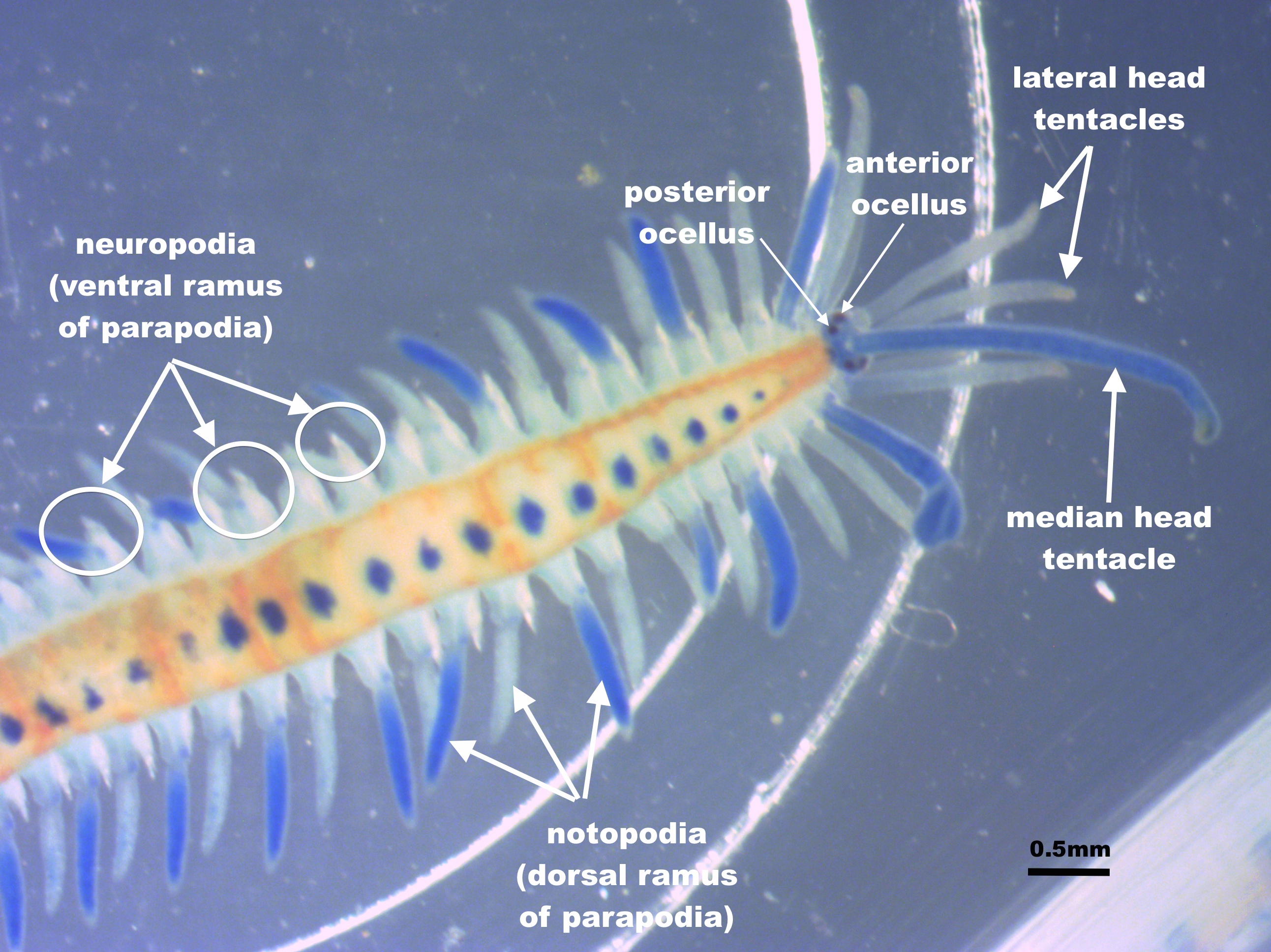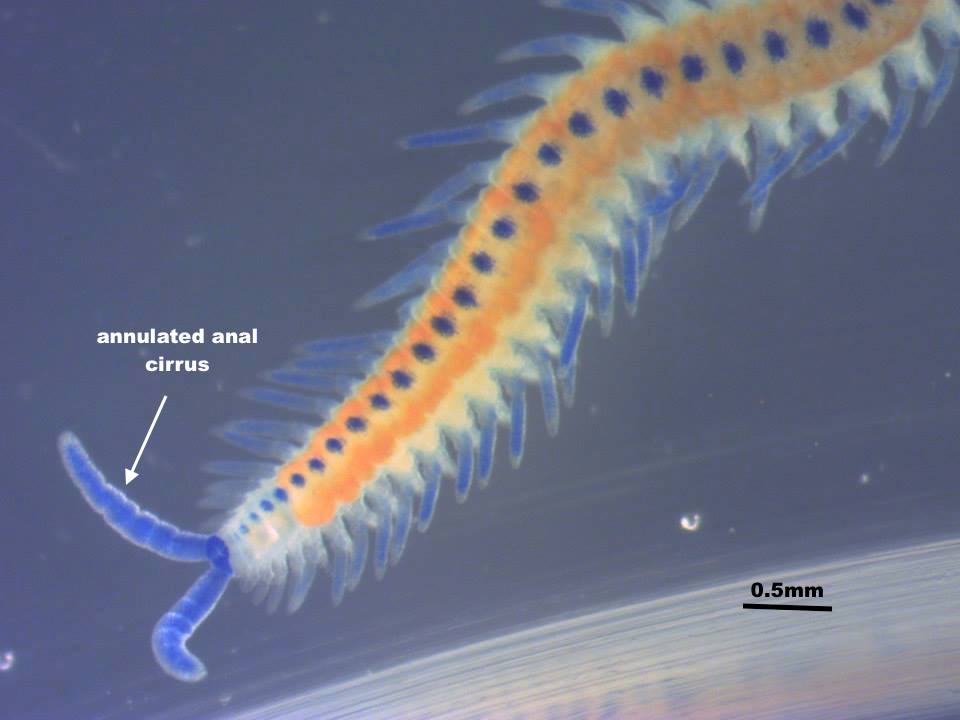External Morphology
A quick look at M. pachycera is enough to identify it as an errant polychaete. Its well developed parapodia, a pair on each of its numerous body segments, allow it to walk along the marine benthos with ease (Ruppert et al., 2004). This, along with its small size (approximately 7.5mm in length and around 1mm in width; Figure 1), indicates that it belongs within the Polychaetae subphylum (Ruppert et al., 2004). It is important to note that, when the project specimen was collected, it was undergoing stolonisation (a wonderfully interesting form of reproduction that is discussed in Reproductive Strategies). As stolons in Myrianida are often formed from the mid body segments rather than the most posterior body segments (Okada, 1935; Aguado et al., 2012) it is possible that the true length of an individual adult M. pachycera is closer to 14 to 15mm, though this has never been quantified.
![]() 
|
|
Figure 1 The parent or 'stock' of a Myrianida pachycera individual. This specimen was undergoing stolonisation when this photo was taken.
|
When looking at M. pachycera with the naked eye, one might mistake it for a minute white centipede (albeit an impossibly aquatic one). Under the microscope however, M. pachycera is brilliantly coloured and patterned. Its body is orange to light yellow in colour, with a single blue dorsal spot in the middle of each chaetiger (Nygren & Pleijel, 2007), and alternating blue and blue-white biramous parapodia (Figure 2).

|
|
Figure 2 The vibrant colouration and pattern of Myrianida pachycera. A chaetiger is any segment that bears chaete.
|
The prostomium is rounded, and contains two pairs of ocelli, or eyes, (the anterior pair being larger than the posterior pair) and three annulated, or ringed, head tentacles/antennae (Figure 3). The project specimen’s median head tentacle was blue and noticeably longer than its white lateral head tentacles, however other photos found across the internet show variability here. As I was unable to find literature regarding such physical characteristics of M. pachycera I cannot say with certainty what is the norm, however I don’t believe these characteristics to be vitally important in the identification of this species.

|
|
Figure 3 The ocelli, head tentacles/antennae and parapodia of Myrianida pachycera.
|
The project specimen exhibited two large blue annulated anal cirri (Figure 4). As it was undergoing stolonisation however, it was difficult to distinguish anal cirri from head tentacles on the parent (or ‘stock’) body and intermediate stolons. The most posterior stolon however, clearly displayed a pair of anal cirri which leads me be to believe that, when not undergoing stolonisation, the stock individual possesses them.

|
|
Figure 4 The anal cirri of the most posterior stolon of Myrianida pachycera.
|
|